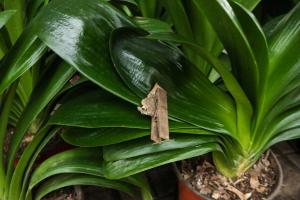Introduction
Palm trees are a common sight in tropical and subtropical regions across the world. They are known for their long, slender trunk and fan-shaped leaves that sway in the breeze. But what makes these trees so unique? One of the key factors is that they are a type of vascular plant. In this article, we'll explore what that means and how it sets them apart from non-vascular plants.
The Basics of Vascular Plants
Before diving into palm trees specifically, it's helpful to have a general understanding of vascular plants. Put simply, vascular plants are those that have specialized tissues (xylem and phloem) for transporting water, nutrients, and sugars throughout their bodies. This allows them to grow larger than non-vascular plants, which must rely on diffusion for spreading these essential substances.
Palm Trees as Vascular Plants
As mentioned, palm trees are a type of vascular plant. This explains how they are able to grow so tall and withstand harsh weather conditions. The xylem tissue in their trunks helps transport water and minerals from the roots up to the leaves, while the phloem tissue moves sugars produced in the leaves down to other parts of the tree.
Other Characteristics of Palm Trees
Being a vascular plant is just one aspect of what makes palm trees so unique. They also have specialized roots that can absorb water from shallow soil, allowing them to thrive in arid environments. In addition, many palm species have fan-like leaves that are adapted to catch sunlight and reduce water loss through transpiration.
The Importance of Palm Trees
Palm trees play a crucial role in many ecosystems around the world. They provide food and shelter for a variety of animal species, including birds and insects. They also help stabilize soil and prevent erosion, which is especially important in areas prone to flooding or desertification.
The Future of Palm Trees
Unfortunately, palm trees are also facing a number of threats in the modern world. Deforestation, climate change, and habitat loss are just a few of the issues that are putting these trees at risk. In some regions, invasive species are also posing a threat to native palm populations.
Conclusion
In conclusion, palm trees are an excellent example of a vascular plant. Their specialized tissues allow them to grow larger than non-vascular plants and withstand harsh weather conditions. However, they are also facing a number of threats in the modern world. As we work to protect these unique and important trees, it is important that we continue to study and appreciate their many fascinating characteristics.

 how many times do yo...
how many times do yo... how many planted tre...
how many planted tre... how many pine trees ...
how many pine trees ... how many pecan trees...
how many pecan trees... how many plants comp...
how many plants comp... how many plants can ...
how many plants can ... how many plants and ...
how many plants and ... how many pepper plan...
how many pepper plan...
































